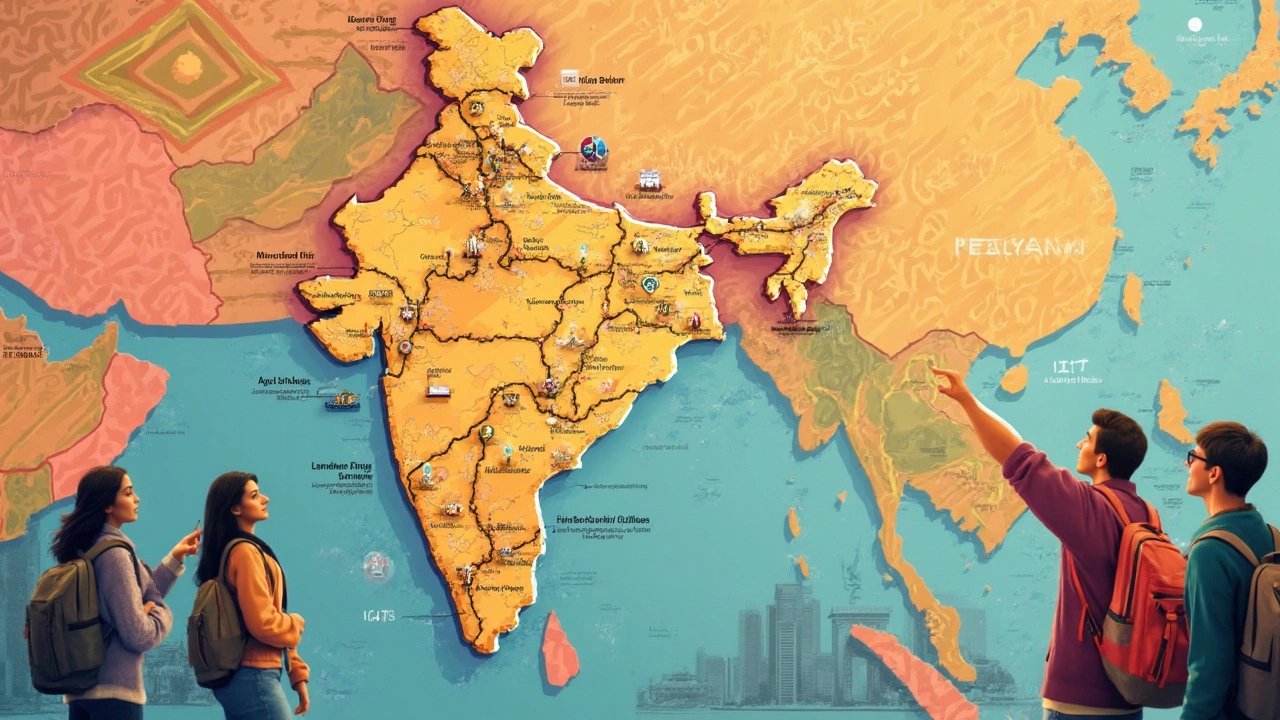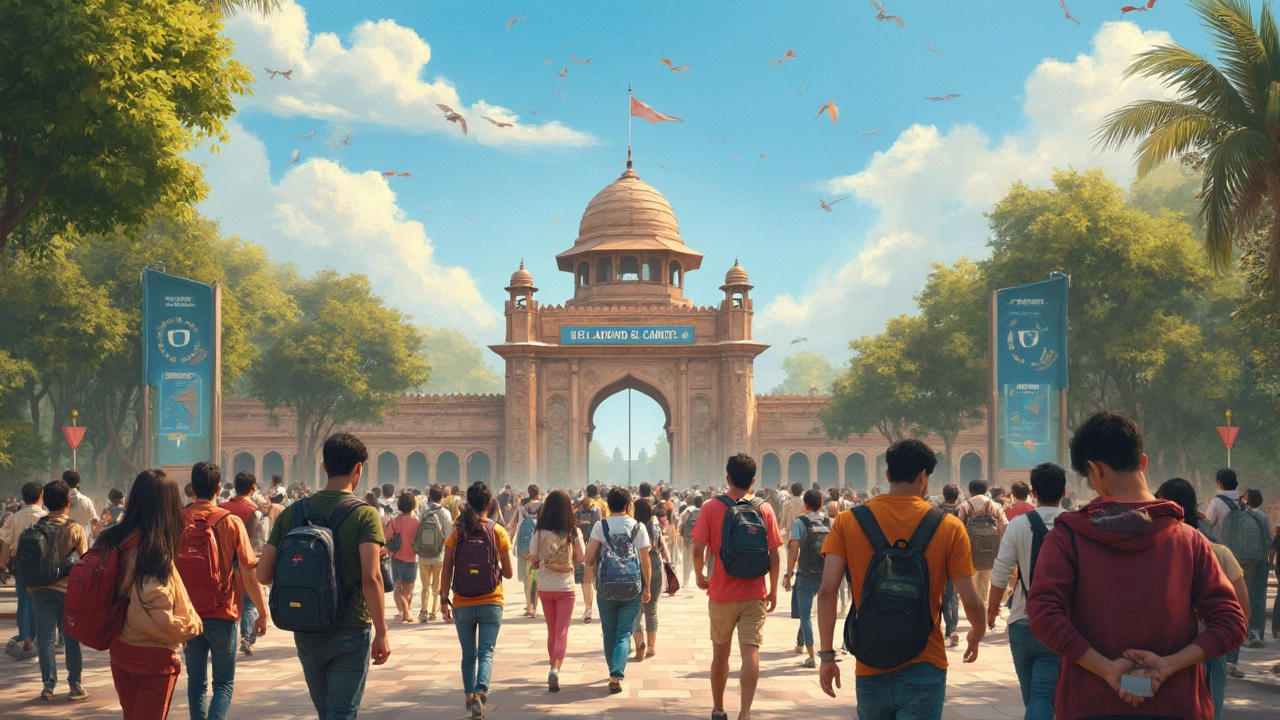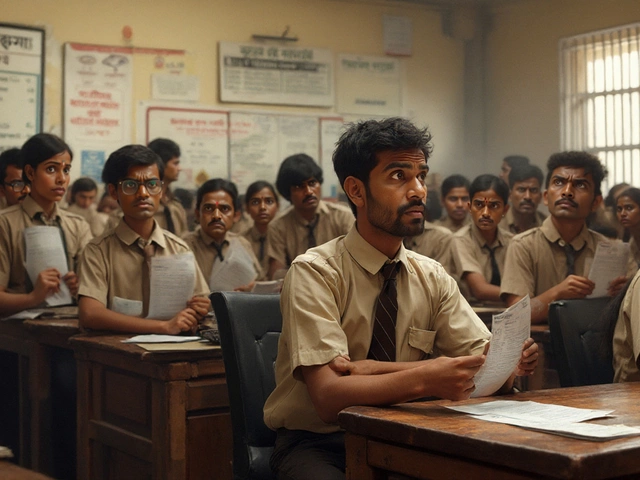
Did you know there are over 20 IITs in India now? Most people remember just five or seven from their school days, but things have changed fast. The IITs aren’t just in the big metro cities anymore—they're spread across the country, and each has its own vibe and strengths.
If you’re prepping for the JEE, you need to know where you could land. It’s not just about getting a seat; it’s about understanding what each IIT offers and which ones might fit your plans and interests. Some IITs are famous for their campus life, some for a specific branch, and a few have a crazy track record for placements in tech giants or startups.
Don’t let all the noise about "the best" or "the old ones" cloud your judgment. Knowing the current number of IITs, where they are, and what they've been up to can help you make smarter choices when you fill out those preference forms. Let's break down where the IITs are and why it matters for your JEE journey.
- Quick History of IITs
- Full List of IITs with Locations
- Recent Changes and New Additions
- Not All IITs Are the Same
- Tips for Choosing the Right IIT
Quick History of IITs
The story of IITs in India starts all the way back in the 1940s. The first Indian Institute of Technology, IIT Kharagpur, kicked things off in 1951 after the government decided India needed world-class technical universities. It was set up on an old detention camp from the British era. Wild, right?
After that, four more IITs popped up in quick succession: Bombay (now Mumbai) in 1958, Madras (now Chennai) in 1959, Kanpur in 1959, and Delhi in 1961. For a long time, these five were the only IITs and had a legendary reputation for tough admissions and solid placements. People call them the “old IITs.”
The Indian government realized there were way more talented students than seats, and global demand for engineers was exploding. So, more IITs started getting built—first at Guwahati (1994), then Roorkee (2001, and interestingly, Roorkee was India’s oldest engineering college before it became an IIT).
Big changes came after 2008 when the government announced a push for more IITs. Suddenly, almost every region was getting its own—the number zoomed from 7 to 23 in just a few years. Here’s a quick look at how things evolved:
| Year | No. of IITs | Notable Event |
|---|---|---|
| 1951 | 1 | IIT Kharagpur established |
| 1961 | 5 | Delhi joins the club |
| 1994 | 6 | Guwahati opens |
| 2001 | 7 | Roorkee converted to IIT |
| 2008-2016 | 23 | Massive expansion, newer IITs built |
Now with 23 IITs across the map, it’s a totally different ball game. Students don’t just aim for ‘IIT’—they have actual choices. Each IIT has its own story, specialties, and campus buzz. But that classic IIT spirit? Still strong everywhere.
Full List of IITs with Locations
If you’re aiming for a top engineering college, knowing the complete IITs in India list is a must. Right now, there are 23 IITs spread across the country. Each one has its own vibe, specializations, and even climate (true story—winter in Kharagpur hits differently from summer in Hyderabad!). Here's a quick breakdown so you actually know where each IIT sits on the map:
- IIT Kharagpur – West Bengal
- IIT Bombay – Maharashtra
- IIT Madras – Tamil Nadu
- IIT Kanpur – Uttar Pradesh
- IIT Delhi – Delhi
- IIT Guwahati – Assam
- IIT Roorkee – Uttarakhand
- IIT Bhubaneswar – Odisha
- IIT Gandhinagar – Gujarat
- IIT Hyderabad – Telangana
- IIT Jodhpur – Rajasthan
- IIT Patna – Bihar
- IIT Indore – Madhya Pradesh
- IIT Mandi – Himachal Pradesh
- IIT Ropar – Punjab
- IIT (ISM) Dhanbad – Jharkhand
- IIT Varanasi (BHU) – Uttar Pradesh
- IIT Palakkad – Kerala
- IIT Tirupati – Andhra Pradesh
- IIT Bhilai – Chhattisgarh
- IIT Goa – Goa
- IIT Jammu – Jammu & Kashmir
- IIT Dharwad – Karnataka
Some of these, like IIT Kharagpur and IIT Bombay, are known as the older institutes. Then you have newer IITs, like Palakkad or Goa, which are ramping up fast and offer solid campus life and fresh infrastructure.
| S.No. | IIT Name | State | Year Established |
|---|---|---|---|
| 1 | IIT Kharagpur | West Bengal | 1951 |
| 2 | IIT Bombay | Maharashtra | 1958 |
| 3 | IIT Madras | Tamil Nadu | 1959 |
| 4 | IIT Kanpur | Uttar Pradesh | 1959 |
| 5 | IIT Delhi | Delhi | 1961 |
| 6 | IIT Guwahati | Assam | 1994 |
| 7 | IIT Roorkee | Uttarakhand | 1847 (IIT since 2001) |
| 8 | IIT Bhubaneswar | Odisha | 2008 |
| 9 | IIT Gandhinagar | Gujarat | 2008 |
| 10 | IIT Hyderabad | Telangana | 2008 |
| 11 | IIT Jodhpur | Rajasthan | 2008 |
| 12 | IIT Patna | Bihar | 2008 |
| 13 | IIT Indore | Madhya Pradesh | 2009 |
| 14 | IIT Mandi | Himachal Pradesh | 2009 |
| 15 | IIT Ropar | Punjab | 2008 |
| 16 | IIT (ISM) Dhanbad | Jharkhand | 1926 (IIT since 2016) |
| 17 | IIT Varanasi (BHU) | Uttar Pradesh | 1919 (IIT since 2012) |
| 18 | IIT Palakkad | Kerala | 2015 |
| 19 | IIT Tirupati | Andhra Pradesh | 2015 |
| 20 | IIT Bhilai | Chhattisgarh | 2016 |
| 21 | IIT Goa | Goa | 2016 |
| 22 | IIT Jammu | Jammu & Kashmir | 2016 |
| 23 | IIT Dharwad | Karnataka | 2016 |
Each IIT has a unique culture. If you’re keen on a specific branch or just want a certain part of the country, use this list to narrow down your JEE preparation strategy. Check out each campus’s official site for the latest info on branches, facilities, or hostel life. You don’t want to be surprised on reporting day, trust me.

Recent Changes and New Additions
The list of IITs in India didn’t always have as many names as it does today. Back in the 2000s, there were just seven. But things shifted pretty fast after 2008. The government kicked off a plan to open new IITs almost every year. Between 2008 and 2016, we saw a serious jump—going from 7 to 23 IITs in total!
Cities that never had big engineering colleges suddenly got their own IIT. For example, IIT Hyderabad, IIT Indore, and IIT Ropar all started around 2008-2009. In quick succession, places like Bhubaneswar, Gandhinagar, and Jodhpur followed. The wave didn’t stop. IITs in Patna, Mandi, and Varanasi (which used to be IT-BHU) joined the pack too.
The newest batch came after 2014, with IITs in Palakkad, Tirupati, Bhilai, Dharwad, Jammu, and Goa. These fresh campuses may not have old hostels or ivy-covered buildings, but they have modern labs, solid teachers, and industry ties. They're catching attention because of their flexibility—many newer IITs offer more student-driven clubs and design their courses to match what today's tech companies want.
Here's a quick look at when the latest IITs started:
| IIT Name | Location | Year Started |
|---|---|---|
| IIT Palakkad | Kerala | 2015 |
| IIT Tirupati | Andhra Pradesh | 2015 |
| IIT Bhilai | Chhattisgarh | 2016 |
| IIT Goa | Goa | 2016 |
| IIT Jammu | Jammu & Kashmir | 2016 |
| IIT Dharwad | Karnataka | 2016 |
What’s the takeaway? The "new" IITs aren’t just backups. They’ve already built strong departments in hot subjects like computer science, mechanical, and data science. Some even run joint programs with older IITs or international universities. If you’re aiming for an IIT, don’t ignore these names just because they’re younger. Their placement stats are improving every year, and campus life is getting more active with new tech events and hackathons.
Not All IITs Are the Same
Putting all IITs in India in one box doesn’t really work. They might share the brand name, but there are major differences between the older ones and the newer batch. For starters, look at when they opened. The original five—Kharagpur, Bombay, Madras, Kanpur, and Delhi—have been around since the 1950s-60s. They have solid reputations, bigger campuses, and long-standing alumni networks. The newer IITs popped up after 2008 and are still growing their reputations and infrastructure.
Each IIT has a unique strength. For instance, IIT Bombay and IIT Delhi are magnets for tech giants and startups. IIT Madras is a hotspot for research and cutting-edge innovation. IIT Kharagpur stands out for its massive campus and its interdisciplinary courses. Meanwhile, newer IITs like IIT Hyderabad or IIT Gandhinagar are known for flexible academics and less rigid branches.
Here’s a quick glance to compare a few popular IITs:
| IIT Name | Year Established | Known For |
|---|---|---|
| IIT Bombay | 1958 | Placements, Entrepreneurship |
| IIT Kharagpur | 1951 | Biggest Campus, Diverse Courses |
| IIT Hyderabad | 2008 | Cutting-edge Tech, Flexible Curriculum |
| IIT Indore | 2009 | PhD Research, Student Projects |
Branch choices can also play a role. Older IITs are super competitive for Computer Science or Electronics, and you’ll need a top JEE rank to get in. Newer IITs may give you a shot at these branches even with a slightly lower rank.
The other big difference: infrastructure and student life. Some new IITs still operate out of makeshift campuses. The established ones have hostels, sports, student clubs, and a buzz that’s hard to match. But honestly, newer IITs give students more say in shaping the culture, since traditions are still being created.
So when you fill in your college choices, don’t just follow the crowd. Check out which IITs in India fit your branch goals, placement dreams, and campus vibe. It’s not about the oldest or the newest—it’s about finding the best match for you.

Tips for Choosing the Right IIT
This is where smart JEE aspirants get ahead. With over 20 IITs in India, just going by the reputation of the old ones isn't enough anymore. You shouldn’t just pick the most well-known name—think about what actually matters for your branch, your interests, and your post-college plans.
- Look at Branch Strengths: Not all IITs shine in every branch. For example, IIT Bombay and IIT Madras are known for Computer Science, while IIT Kharagpur has a top architecture and civil program. Check the specific department ratings and faculty profiles on the official IIT websites before you decide.
- Placements Data Matters: Don't just listen to placement festival stories. Most IITs publish their placement data—average CTC, top recruiters, branch-wise offers. Here’s a snapshot of recent averages:
| IIT | Average Salary (INR, LPA) |
|---|---|
| IIT Bombay | 21 |
| IIT Delhi | 20.5 |
| IIT Kharagpur | 17 |
| IIT Patna | 15 |
- Don’t Ignore Location: City life, connectivity, and climate matter more than you think. If you dread humid summers, maybe avoid the coastal ones. If you want easy access to internships or startups, IITs near big cities like Delhi and Mumbai naturally get more attention from recruiters.
- Batch Size and Campus Life: Some of the newer IITs have smaller batches. That can mean better faculty access but maybe a less buzzing campus life. Old IITs often have way bigger festivals, clubs, and alumni networks.
- Check the Facilities: Not every IIT has the same hostels, labs, or sports grounds. You can find campus tours online on YouTube or the official websites, which really help set expectations right.
Here's a quick tip—talk to current students if you get a chance. They're brutally honest about what works and what doesn't at their IIT. And when it comes to JEE prep, don’t waste time on rumors. Get your hands on facts and decide based on your own career goals, not just hype.





